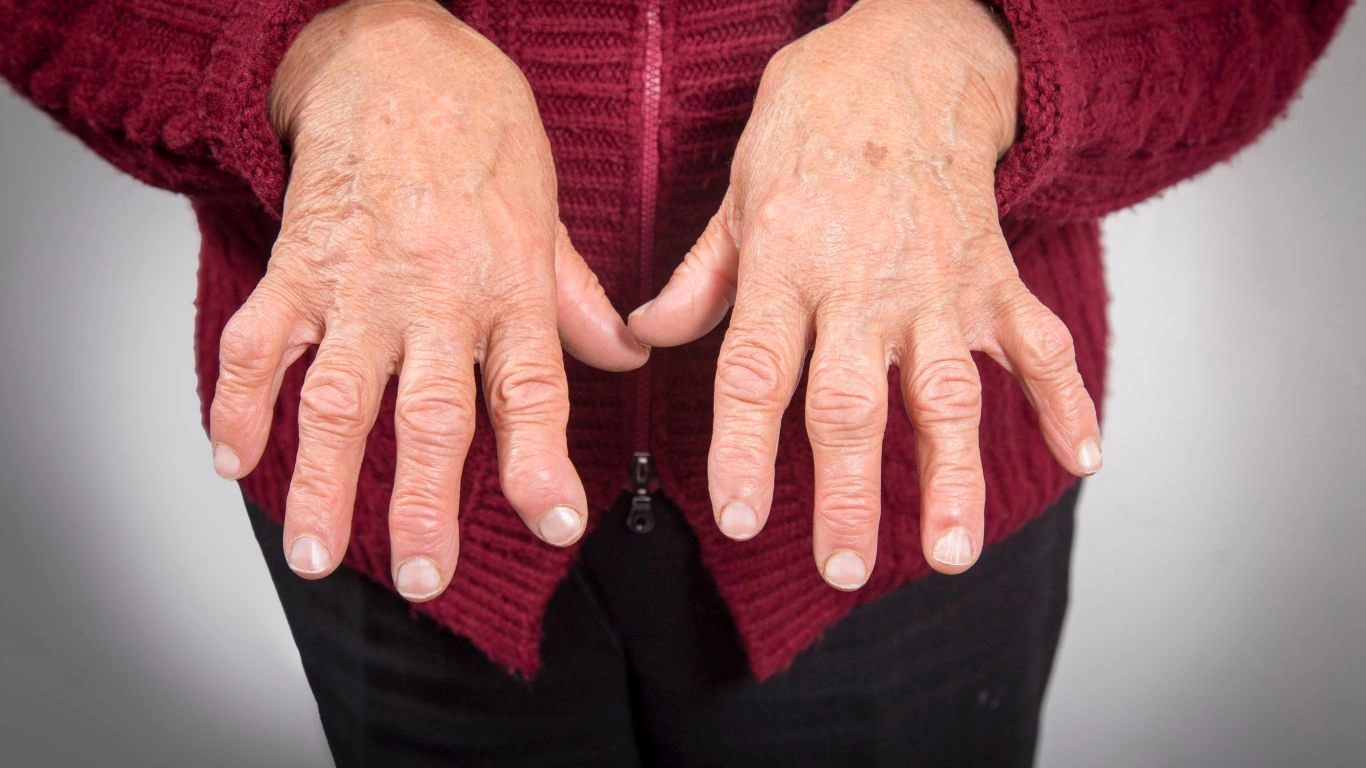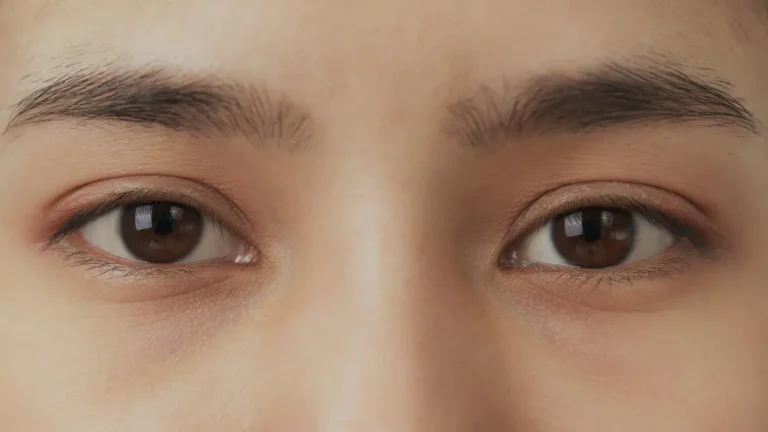Can Rheumatoid Arthritis Cause Nerve Damage? Learn the Shocking Truth
Can rheumatoid arthritis cause nerve damage? This is a question I’ve been asked countless times in clinic, and honestly, it’s not always a simple yes or no. As a Rheumatology Nurse Practitioner, I’ve seen firsthand how this chronic autoimmune condition can do far more than just affect the joints. While most people associate RA with swollen, painful fingers or knees, it can actually sneak into other areas—including your nervous system. And that’s when things get a bit more complex. Let’s dig into what’s really going on when nerves start to act up in the world of RA.
Understanding the Basics of Rheumatoid Arthritis

Rheumatoid arthritis (RA) is a chronic inflammatory autoimmune disease that primarily targets the synovial lining of the joints. But here’s the kicker—it doesn’t always stop there. Inflammation from RA can ripple through your entire body, affecting organs, blood vessels, and yes, even nerves.
RA causes your immune system to go into attack mode, mistaking healthy joint tissues as foreign invaders. Over time, this persistent immune response can lead to joint deformities, cartilage destruction, and bone erosion. But when inflammation isn’t kept in check, it can also start damaging surrounding tissues—including the delicate network of nerves that carry signals all over the body.
So, Can Rheumatoid Arthritis Cause Nerve Damage?

Yes, it absolutely can. And I’ve seen this manifest in several patients, often in subtle ways at first. One woman came in thinking she had carpal tunnel syndrome, only for testing to reveal her RA was compressing the median nerve due to inflamed tissues. Another gentleman developed foot drop—he could barely lift the front part of his foot—because the peroneal nerve was under pressure from chronic joint swelling around his knee.
Nerve involvement in RA typically shows up in a few different ways, depending on what’s being compressed or damaged:
- Peripheral neuropathy: Tingling, numbness, or burning sensations, often in the hands or feet.
- Entrapment neuropathies: Conditions like carpal tunnel syndrome, where nerves are pinched by swollen tissues.
- Mononeuritis multiplex: A more severe and rare complication involving damage to multiple nerves in random areas, often linked with vasculitis in RA.
Why Nerve Damage Happens in RA

Nerve damage in rheumatoid arthritis is usually a result of a few main culprits:
- Chronic inflammation: Persistent inflammation from RA can damage nearby nerves or compress them within swollen joints or tissues.
- Joint deformities: As joints become misaligned or deformed, they can physically press on nerves, leading to pain, weakness, or numbness.
- Rheumatoid nodules: These are firm lumps that can develop under the skin, often near pressure points. When they form near nerves, they can cause mechanical compression.
- Vasculitis: This is inflammation of the blood vessels, and when it strikes in RA, it can compromise blood flow to nerves—leading to nerve death if untreated.
From my clinical experience, carpal tunnel syndrome is hands-down the most common nerve-related complication I see in RA patients. It’s so common, in fact, that I often include a quick nerve compression screen in routine follow-ups, especially for folks reporting hand weakness or weird sensations.
Recognizing the Signs: What Patients Often Miss
What surprises a lot of people is how easy it is to overlook nerve symptoms. They often creep in slowly. A patient may chalk it up to aging or sleeping funny. I can’t tell you how many times someone has said, “I thought it was just bad posture,” only for an EMG test to show clear nerve damage.
Here are a few red flags that might suggest nerve involvement in RA:
- Persistent numbness or tingling in fingers or toes
- Muscle weakness that seems to get worse over time
- Difficulty gripping objects or frequent dropping of items
- Burning pain in arms or legs not explained by joint issues alone
Honestly, if any of these symptoms show up, it’s worth having a deeper conversation with your rheumatologist or specialist. The earlier we catch it, the better the chance we can prevent permanent damage.
Patient Story Highlight
Let me tell you about “Linda” (not her real name). She was in her early 50s with fairly well-controlled RA, but started noticing numbness and clumsiness in her right hand. She figured she’d just overused it while gardening. But over the next few weeks, she found herself unable to hold a pen properly. Imaging and nerve testing revealed compression of her median nerve—classic carpal tunnel from chronic wrist inflammation. We adjusted her RA meds, added wrist splints, and eventually referred her to neuro for a steroid injection. Within weeks, she was back to journaling and gardening like nothing happened.
That’s the thing—when you know what to look for, you can act fast. And when you act fast, you can often reverse or at least halt the damage. That’s why awareness is everything.
How Rheumatoid Arthritis-Related Nerve Damage Is Diagnosed

So, what happens when we suspect nerve involvement in a patient with rheumatoid arthritis? As a rheumatology NP, I can tell you the diagnostic process is rarely a straight line. It often starts with just a gut feeling—someone mentions odd tingling, or maybe they’re fumbling with buttons more than usual. Those little comments are gold. They tell me we might be looking at something beyond joint inflammation.
Here’s how we usually get to the bottom of it:
- Clinical exam: First up is a thorough physical exam. I always check for signs of muscle weakness, sensory changes, and reflex abnormalities. Sometimes even simple observation—watching how someone walks or uses their hands—can reveal a lot.
- Electrodiagnostic testing: This includes nerve conduction studies and electromyography (EMG). These tests help us pinpoint which nerves are affected and how severely.
- Imaging: An MRI or ultrasound might be ordered if we suspect something like carpal tunnel or nerve impingement due to joint damage or rheumatoid nodules.
- Lab tests: While they won’t diagnose nerve damage directly, bloodwork helps rule out other causes (like vitamin deficiencies or diabetes) and assess overall RA activity.
In my own practice, I’ve learned to trust those early whispers—those vague “I don’t know, my hand just feels… weird” type complaints. Patients know their bodies better than they think. If you’re in the field, always listen closely to the “small stuff.” It’s often not small at all.
Managing Nerve Damage in RA Patients

Alright, so now what? We’ve identified that RA is impacting the nerves. Does that mean it’s game over for those nerves? Not necessarily.
The goal is to tackle both the underlying rheumatoid inflammation and the nerve symptoms themselves. It’s definitely a team effort, and I often coordinate with neurologists, physical therapists, and sometimes surgeons depending on the severity.
Step-by-Step Treatment Strategies
- Control the inflammation: First and foremost, we need to get the RA under control. That means optimizing DMARDs (Disease-Modifying Anti-Rheumatic Drugs) or starting biologics if needed. Methotrexate, hydroxychloroquine, or newer options like TNF inhibitors can reduce the inflammation that’s harming nerves in the first place.
- Steroids for flare-ups: When symptoms are sudden or severe, corticosteroids—whether oral or injected—can help reduce nerve compression and inflammation fast. I’ve seen patients get significant relief within days of a well-placed injection near the wrist or elbow.
- Bracing and physical therapy: Braces can help relieve pressure in cases like carpal tunnel, while PT can build strength and restore function. I always tell my patients: movement is medicine, but smart movement is the key.
- Neuropathic pain meds: If nerve pain is persistent, medications like gabapentin, pregabalin, or duloxetine may help. They don’t “fix” the nerve but can make life a lot more livable while we address the root cause.
- Surgical interventions: For severe entrapments that don’t improve with conservative care, surgery may be necessary. I’ve had a few patients undergo carpal tunnel release and regain full hand function afterward—it’s not always Plan A, but it can be a real game-changer.
Can Nerve Damage from Rheumatoid Arthritis Be Reversed?

This is a big one. I get asked this almost every time nerve damage is brought up. The honest answer? It depends.
If the nerve has only been compressed for a short time or irritated but not fully damaged, then yes—symptoms can often be reversed or significantly improved. I’ve seen patients regain full strength and sensation in weeks or months with the right combo of medication, therapy, and lifestyle tweaks.
But when nerve damage has been going on for years, or when vasculitis has caused true nerve death, recovery is a lot trickier. At that point, we’re mostly trying to prevent things from getting worse and manage symptoms as best we can.
The key here is early detection and early action. The sooner we know there’s nerve involvement, the better chance we have of turning it around—or at least hitting pause on the progression.
These are small changes, but when added together, they can make a difference:
- Keep inflammation in check: Stay consistent with your RA meds and follow up regularly with your care team.
- Don’t ignore symptoms: Numbness, tingling, burning, weakness—bring it up, even if it feels minor.
- Protect your joints: Use adaptive tools or ergonomic supports, especially if you work at a computer or use your hands repetitively.
- Stay active but smart: Low-impact activities like swimming, walking, or yoga can help keep nerves and joints happy.
I always tell folks: you’re not being “dramatic” or “overthinking it” if you bring up weird nerve sensations. You’re being smart. And proactive. And honestly, that’s how we stay ahead of this disease instead of just reacting to it.
Provider Perspective: The Power of Listening
In my years working with people living with RA, one thing that’s stuck with me is how often nerve symptoms come up when people feel safe, heard, and not rushed. It’s in those moments—after the main checklist is done, when someone pauses and says, “Actually, there’s one more thing…”—that we uncover what’s really going on.
That’s why I believe providers must slow down and really listen. And if you’re a patient reading this, please know: you’re the expert of your own body. Don’t downplay what you’re feeling. Your voice matters in this journey—sometimes it’s the only thing standing between manageable symptoms and permanent damage.
Living with Rheumatoid Arthritis and Nerve Damage: Real-World Strategies

Living with both rheumatoid arthritis and nerve damage can feel like juggling two beasts at once. You’ve got the joint pain, stiffness, and fatigue from the RA—and now you’re adding numbness, weakness, or even burning nerve pain into the mix. It’s a lot. I’ve seen the emotional toll firsthand in my patients—and I’ve had those long talks in the exam room where we just sit and figure out how to take things day by day.
So, let’s get practical. What are some strategies that actually help? The kind of tips I’ve shared with patients during real conversations, not just pulled from a textbook.
Daily Life Hacks That Make a Difference
- Use voice-to-text tools: If hand or wrist nerve pain is making typing difficult, voice typing on your phone or computer can be a game changer.
- Switch to adaptive utensils: Things like wide-handled spoons or button hooks can reduce stress on nerves and joints alike.
- Take “nerve breaks”: I often recommend patients set a timer every hour or so to stretch, reposition, or shake out their hands and feet—especially if they’re at a desk or standing for long periods.
- Heat and cold therapy: Sometimes alternating between heat for joints and cold packs for nerve irritation can provide targeted relief.
And I can’t stress enough the power of pacing. Many of my patients are fighters by nature—they want to do it all. But when you’ve got RA and nerve involvement, pushing through pain usually backfires. Instead, I always say: plan your day in chunks, listen to your body, and build in recovery time like it’s a priority—because it is.
The Emotional Impact of Nerve Damage in RA

Here’s the part that often gets overlooked: the emotional toll. When RA starts to impact your nerves, it can also start to mess with your identity. I’ve had patients break down in tears because they can’t play piano anymore, can’t knit, can’t hold a cup steady. Those losses hit hard—and they’re valid.
I always bring up mental health during visits, especially when nerve symptoms start to impact function. Anxiety, frustration, and depression are common, and they deserve just as much attention as physical symptoms.
If you’re struggling, consider talking to a counselor, joining a support group, or even finding a chronic illness therapist. Apps like Talkspace or BetterHelp have options for those who can’t make it to in-person sessions. And never underestimate the power of connecting with others who understand. Online communities like those on Reddit or Inspire offer support, empathy, and shared wisdom from folks walking a similar path.
When to Call Your Provider (And What to Say)
It’s one thing to know something’s off. It’s another to feel confident bringing it up. I get it—clinic visits are short, and it’s easy to forget that weird hand numbness or foot drop that started a month ago. But here’s what I always tell my patients: If something feels new, different, or worsening—it’s worth mentioning.
Not sure how to bring it up? Here are a few phrases you can keep in your back pocket:
- “I’ve noticed some tingling in my hands that doesn’t seem to go away.”
- “Lately I’ve been dropping things more often—is that something to worry about?”
- “My foot feels weaker on one side, and I’m not sure if it’s the RA or something else.”
These types of comments open the door to a deeper conversation. They help your provider know where to dig in. And trust me—we want to know. We’d rather investigate and find nothing than miss something that could become irreversible.
Where Research Is Headed: A Glimpse Into the Future
One of the most exciting things I’ve seen over the last few years is how research is finally catching up to the complexities of RA-related nerve damage. We’re starting to understand more about how chronic inflammation affects nerve pathways, and there’s emerging data on neuroprotective therapies being tested alongside traditional RA medications.
Some researchers are looking into using biologics with dual immune-modulating and nerve-protecting effects. Others are diving into the role of the gut microbiome, exploring whether gut health impacts inflammatory pathways that affect the nerves. Crazy interesting stuff. We’re not quite there yet, but it gives me real hope for more targeted and effective treatments in the not-so-distant future.
Final Thoughts From the Nurse Practitioner’s Chair
If you’ve made it this far—thank you. This is a topic that doesn’t get enough attention, and it means a lot that you’re taking the time to learn about it. Whether you’re a patient, caregiver, or fellow healthcare professional, I hope you’re walking away with a better understanding of just how intertwined rheumatoid arthritis and nerve damage can be.
I’ve seen the frustration. I’ve seen the courage. And I’ve also seen people regain function, find relief, and take control of their health again with the right care and information. So yes—rheumatoid arthritis can cause nerve damage. But it doesn’t have to be the end of the road. Not by a long shot.
References
Disclaimer
This article is intended for informational purposes only and does not constitute medical advice. Please consult your healthcare provider for personalized medical guidance. Information shared here is based on clinical experience and current evidence, but may not apply to every individual case.

Tarra Nugroho is a dedicated Nurse Practitioner with a strong foundation in family and preventive care. She brings both compassion and clinical expertise to her practice, focusing on patient-centered care and health education. As a contributor to Healthusias.com, Tarra translates medical knowledge into clear, empowering articles on topics like women’s health, chronic disease management, and lifestyle medicine. Her mission is simple: help people feel seen, heard, and informed—both in the clinic and through the content she creates. When she’s not caring for patients, Tarra enjoys weekend hikes, plant-based cooking, and curling up with a good health podcast.






